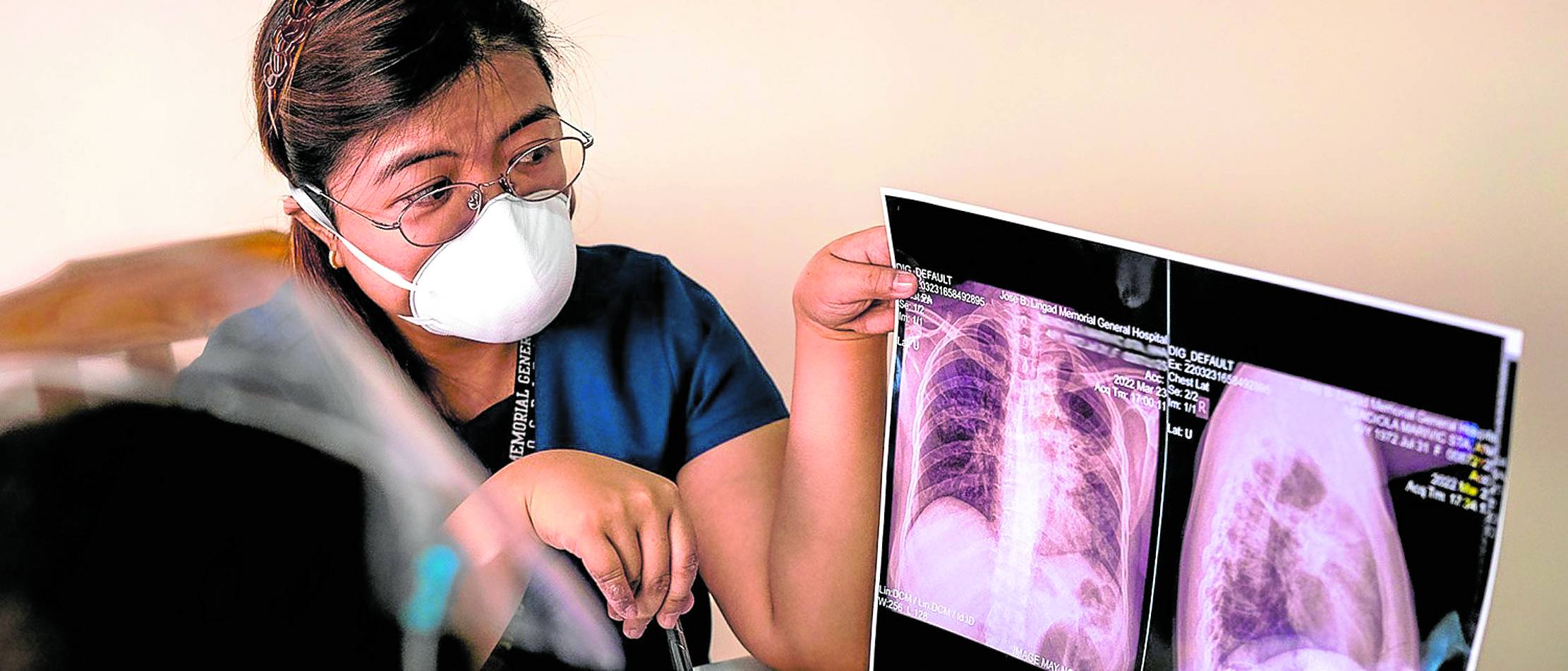Better tuberculosis treatment set for rollout

KNOWLEDGE HUB A health worker explains tuberculosis treatment at a learning center launched in Manila in March. —PHOTO FROM WEBSITE OF TB ALLIANCE
A faster and more effective treatment for drug-resistant tuberculosis (TB) is being rolled out in the Asia-Pacific region, raising hopes of a “new era” in tackling one of the world’s deadliest infectious diseases.
The region had most of the world’s estimated 10.6 million new TB cases in 2022, and more than half of the 1.3 million deaths, World Health Organization (WHO) figures show.
While TB can be successfully treated with antibiotics, more than three percent of new TB patients are resistant to commonly prescribed drugs.
READ: TB: Asia-Pacific gets new weapon against drug-resistant strain
Until recently, treatment for these patients involved daily painful injections or a fistful of pills for 18 months or longer, while some endured severe side effects such as nausea and, in extreme cases, blindness.
Article continues after this advertisementNow, a new drug regimen involving fewer pills and side effects is being rolled out in the Asia-Pacific, including the Philippines, Vietnam and Indonesia, where trials have shown a more than 90 percent cure rate after six months.
Article continues after this advertisementThe treatment, known as BPaL, combines the antibiotics bedaquiline, pretomanid and linezolid, and has received regulatory approval in more than 60 countries since 2019, according to the nonprofit TB Alliance, which developed it.
READ: DOH raises alert on rise in tuberculosis cases: It’s ‘higher than in 2022’
BPaL has been life-changing for Filipino cook Efifanio Brillante, who was diagnosed with drug-resistant TB in June 2022 and initially underwent an older form of treatment.
But Brillante, 57, had to take 20 tablets a day, and that left him feeling nauseous so he couldn’t work or eat and he had to stop the medication after two weeks.
‘A curable disease’
The following month, Brillante joined a BPaL trial at the Jose B. Lingad Memorial General Hospital in Pampanga.
He took between three and seven pills a day and was cured after six months.
Eight countries accounted for two-thirds of new TB cases in 2022: India, Indonesia, China, the Philippines, Pakistan, Nigeria, Bangladesh and the Democratic Republic of Congo.
One of the biggest challenges of treating drug-resistant TB has been getting patients to take the full course of their medication.
Even in countries where treatment is free, patients face crippling travel costs to hospitals and loss of income, or even their job, due to the illness and side-effects of the drugs, leading many to stop taking their pills.
Fear of social stigma from a positive diagnosis is common.
“We’re trying to educate them that TB is a curable disease,” said Irene Flores, who led the BPaL trial at the Jose B. Lingad Memorial General Hospital in the Philippines.
More investment needed
After years of decline, the number of people falling ill with TB and drug-resistant tuberculosis began increasing during the COVID-19 pandemic, the WHO said previously.
To help accelerate the rollout of BPaL, with or without moxifloxacin, the TB Alliance has set up a “knowledge hub” in Manila to provide training and assistance to other countries.
“I hope this is … just the beginning of a new era of TB treatment where they will be even simpler, even shorter.”